

From 6 to 27 October 2001 I visited Cambodia. Cambodia's modern history is one with a lot of violence of which the Khmer Rouge regime (1975-1978) of Pol Pot was the worst. The last Khmer Rouge surrendered themselves as late as December 1998 after waging a guerrilla war for many years leaving the country littered with mines. Nowadays, Cambodia is relatively safe but there are still many mines in Cambodia so stay on the tracks.
Cambodia is most famous for the temples of Angkor such as Angkor Wat, Angkor Thom and Bateay Srei. When in Cambodia you should not miss the Killing Fields and the Tuol Sleng museum in Phnom Penh. For the beach you should go to Sihanoukville.
The roads in Cambodia are a tourist attraction by itself. See the pictures of National Highway 6 to see what I mean.
Apart from Angkor and Phnom Penh, you won't find many tourists in Cambodia. Especially if you visit the south-east of Cambodia like Ratanakiri, you will be one of the few.
The official currency in Cambodia is the Riel but it is mainly used for small amounts. When the price higher than one or two dollar, they will use dollar bills. In the west of Cambodia, the Thai Bath is also happily accepted. You even get the bill there in three different currencies.
We started our journey in Bangkok (Thailand) from where we headed to the Thai/Cambodian border. After filling in 3 different forms at three different counters, and paying some money for which they oddly enough didn't accept dollars but bath only, we stood in Cambodia. The other side of the border is totally different. No asphalt roads and stone houses anymore but dirt roads with many holes and simple wooden houses.
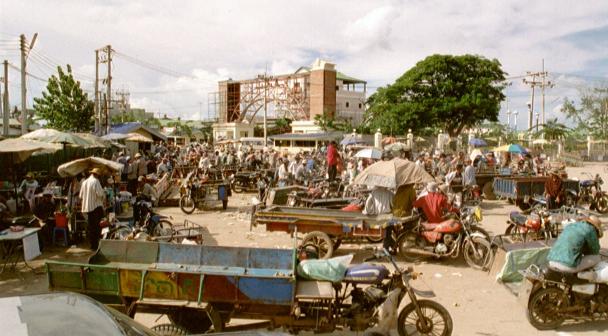
Poipet border crossing. A lot of motor-riders will be happy to give you lift
Out first stop in Cambodia was Battambang, the 2nd largest city of Cambodia, from where we took the boat to Siem Reap over the Sangker river and the Tonlé Sap lake. There is much to see along the banks of the river such as fishermen, ferries, washing women, little villages and even a mini supermarket surrounded by kilometers of water.
Near Siem Reap lie the famous temples of Angkor. Angkor consists of around 100 temples spread over a vast area. You need several days to see the most important temples.
Angkor Thom is not a single temple but a temple complex surrounded by a 12km long wall and 100m wide moat. Each side of the wall has a monumental gate decorated with the smiling faces of Avalokiteshvara. In front of the gates there is a bridge decorated by god and demon statues engaged in a tug of war.
The most important temple inside Angkor Thom is the Bayon. It has a collection of 54 towers, each decorated with 4 smiling faces of Avaolkiteshvara.
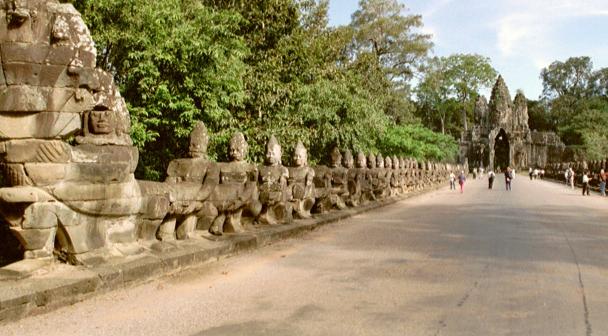
Angkor Thom South Gate - 54 demons and 54 gods depicting the "Churning of the Ocean of Milk"
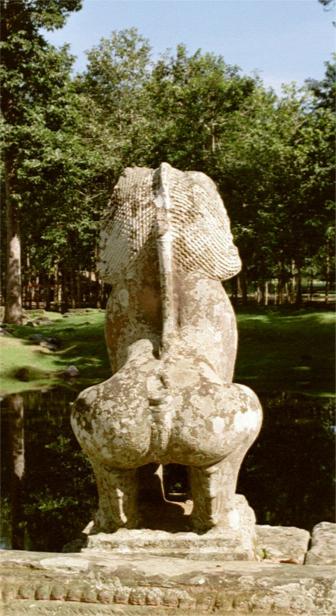
A lion statue in front of the Bayon seen from a funny perspective :-)
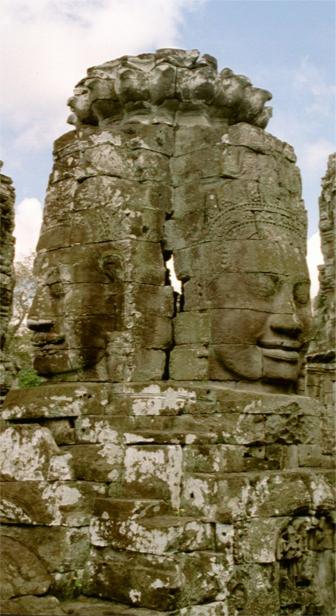
Two of the many smiling faces of Avalokiteshvara
The special thing about Ta Prohm is that this temple is left in the hands of the jungle. This means that the ruins are overgrown with vegetation and large trees which hold the stones together. It look much like when Angkor was first discovered and gives this temple an unique feel.
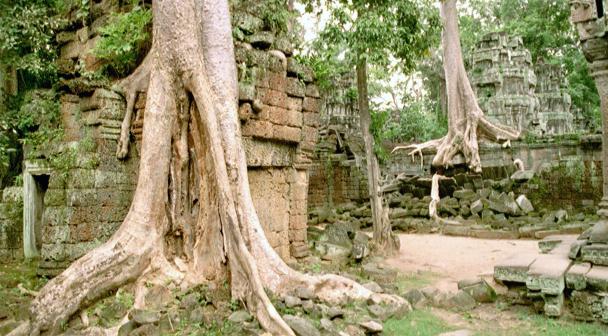
The ruins of Ta Prohm are covered with plants and large trees
Angkor Wat is the largest temple of Angkor. Angkor Wat is also enclosed by a 5.6km long wall and 190m wide moat. Inside lies the Angkor Wat which is to be believed both a temple and a mausoleum for Suryavarman II. The outside wall of the central temple is decorated with extraordinary bas-reliefs depicting many events from history and mythology.
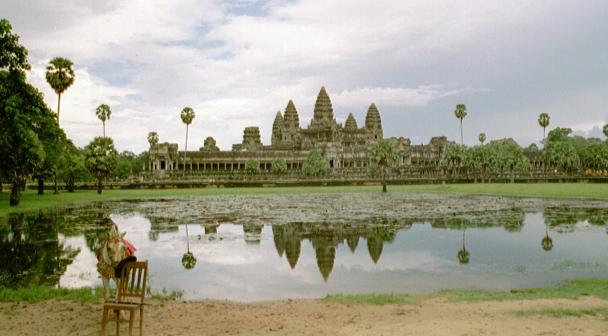
The most famous temple of Cambodia: "Angkor Wat"
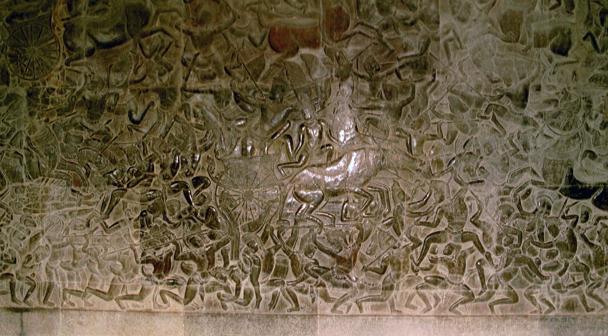
A bas-relief of the "Battle of Kurukshetra"
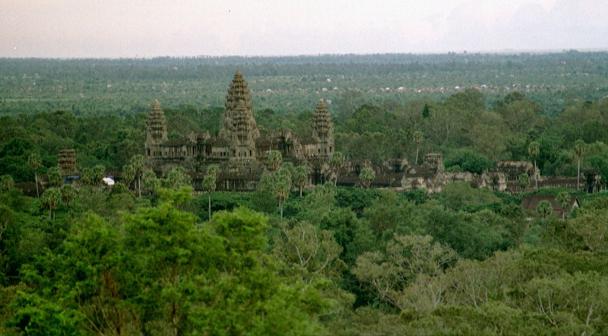
"Angkor Wat" seen from the hill top of "Phnom Bakheng"
About 13km from Siem Riep lie a group a temples called the Rolous group. To reach the site I hired a bike. The road to Rolous is fairly good but because there are no road signs we went much too far which let to surprised looks of the locals who never see tourists that far from town. But after a beautiful ride around Rolous we eventually reached the temples.
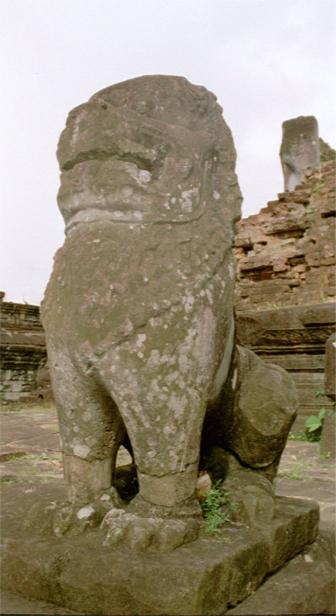
A lion statue on the Bakong temple
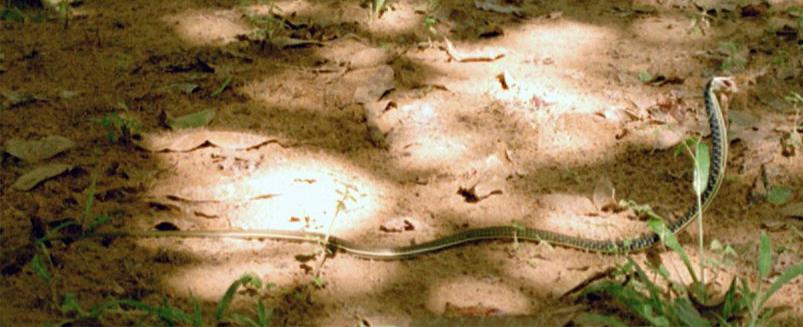
A snake that just caught a frog. Normally snakes 'run' away when they see you, but now he had to defend his prey
A less known but very beautiful temple is Bateay Srei. It is quite small but the well preserved bas-relief makes this temple well worth the visit.
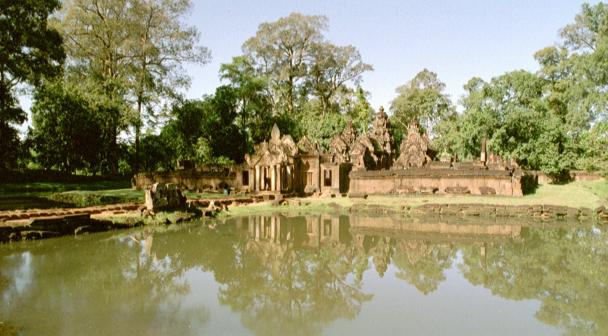
The beautiful "Bateay Srei" temple
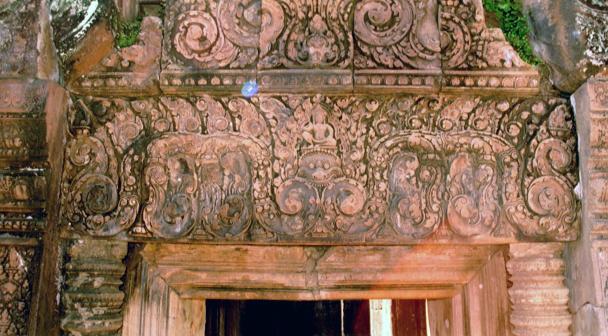
"Bateay Srei" has one of the most beautiful carved stones of Cambodia
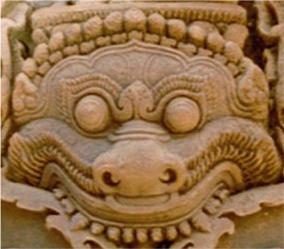
Close up of the dragon in the picture above
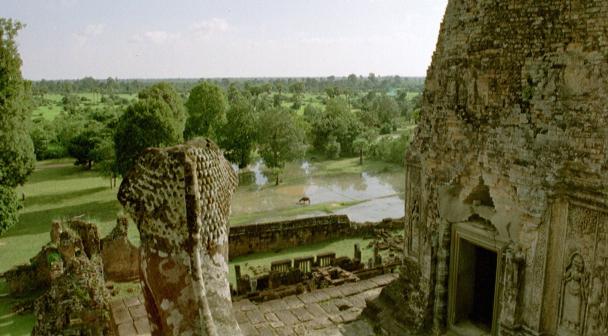
The view from the "Pre Rup" temple
From Siem Riep we set course to Phnom Penh. These pictures tell the story of our journey over National Highway 6. Or how the term "highway" can have a total different meaning.
In spite of the bad or non-existent road, walking through water and mud and pulling cars out of the water, I found it the most enjoyable trip in Cambodia.
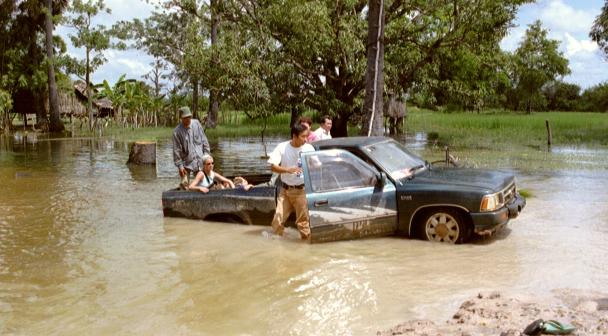
One of our jeeps got stuck in the water
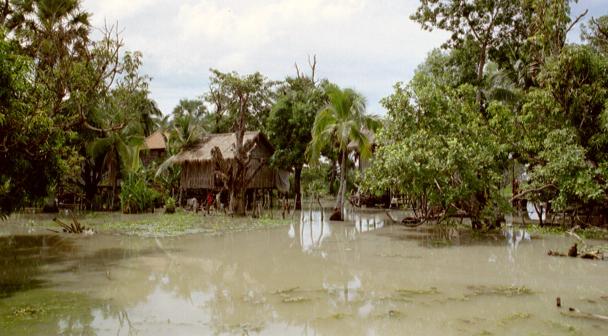
One of the houses besides the road
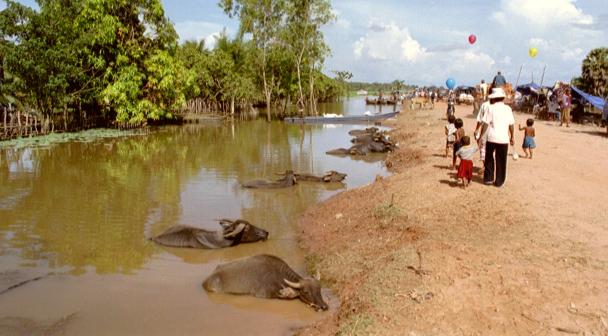
These buffalos seem to like all the water
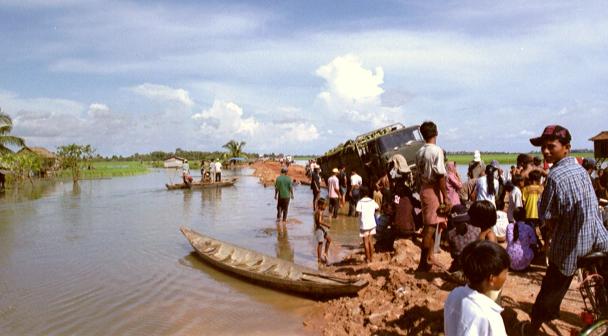
This truck fell off the improvised tree-trunk bridge thus blocking all other traffic
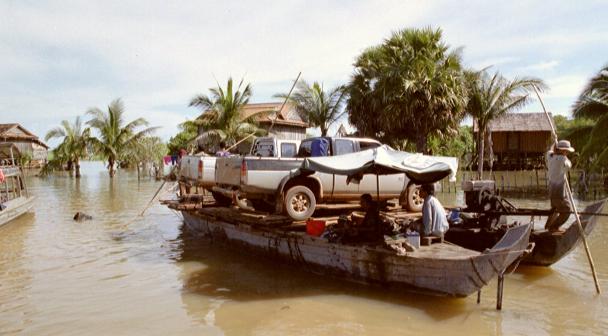
But don't worry, the locals organised a simple ferry
On the road to Phnom Penh, we stopped at a little town called Skuon. This otherwise boring town is famous for its culinary specialty: the fried spider. These hairy, hand-size spiders are bred in holes. No one seems to know when they started eating spiders but it is rumored that they began eating them during the Khmer Rouge period when food was scarce.
The legs and head of the spider are crunchy and tasted quite good. The middle body contains white meat that tastes a bit like eh... chicken. The lower body was filled with a grey substance with yellow balls and didn't tasted that well. In all, the spider tasted better than expected but not as good as the fried frog I ate in Phnom Penh. Frog meat is very juicy and tasty. Only they chopped the frog into little bits so you had to take care not to eat the tiny bones.
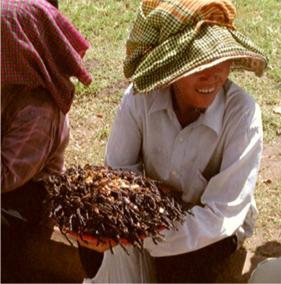
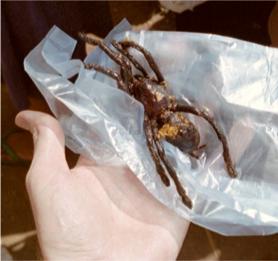
The spider seller and the spider I bought from her
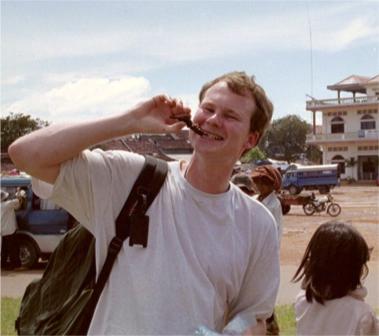
Yummy, these spiders taste better than they look
The capital of Cambodia is Phnom Penh named after the hill were the cities founder, a women called Penh, lived (Phnom Penh = Hill of Penh). The main attractions of Phnom Penh are the Royal Palace with it's Silver Pagoda, Wat Phnom and the National museum.
Not to be missed is the Tuol Sleng museum, the former Khmer Rouge S-21 prison. A depressing place to visit but essential if you want to know more about the horrifying Khmer Rouge regime. The museum houses many photos of prisoners and paintings of one of the seven survivors of this prison. The paintings show how the prisoners were tortured and killed from pulling nails, hanging upside down in water and throwing babies in the air and catching them with a bayonet to save precious bullets.
Another must see are the Killing Fields of Choeung Ek. Unfortunately, at the time I was in Phnom Penh, the fields were flooded and unreachable because of the heavy rain fall.
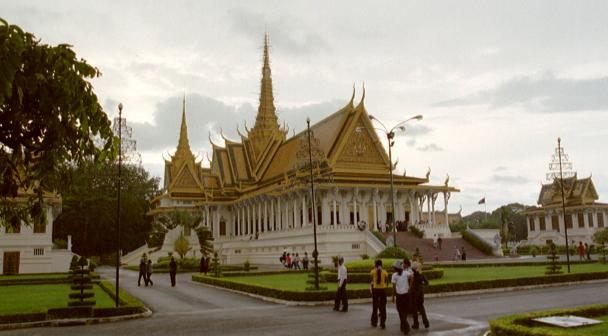
The "Throne Hall" of the "Royal Palace" in Phnom Penh
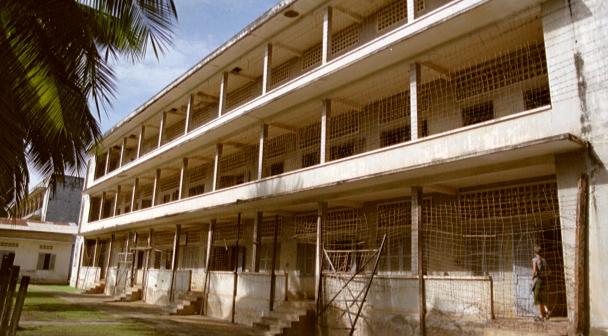
One of the buildings of "Tuol Sleng" or the "Security Prision 21 (S-21)"
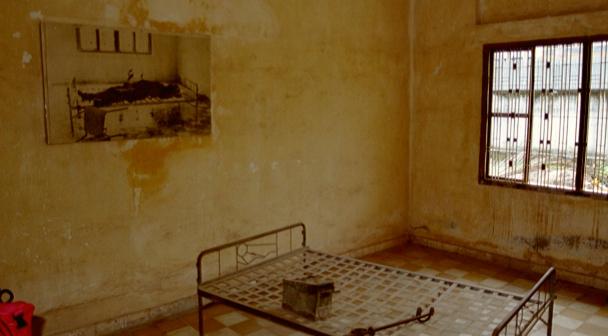
One of the torture cells in "Tuol Sleng"
The north-east of Cambodia is home to several shy hill tribes. Not many tourists come to this area making the Ratanakiri a unique place to visit.
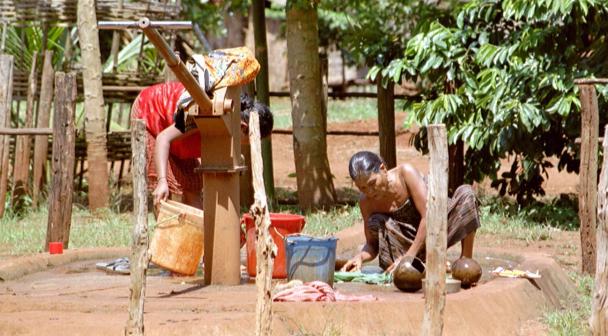
Women doing the laundry in one of the small hill tribe villages
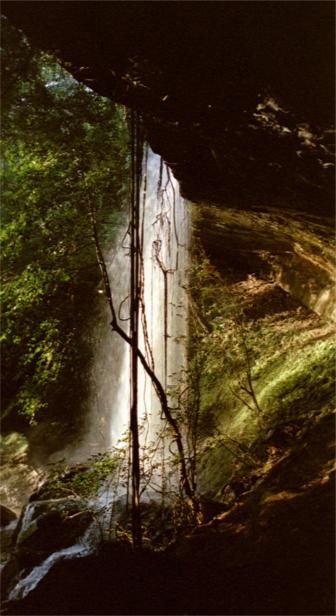
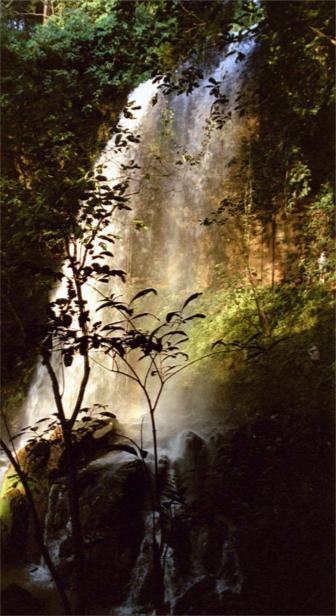
One of the nice waterfalls in the Bang Lung area
Kampot is near the southern coast of Cambodia. There is not much to see in Kampot. Near Kampot is the "Bokor National Park" which is one of Cambodia largest. Inside the park is the old "Bokor Hill Station", a abandoned city founded by the French in 1922. You can still find the ruins of houses, churches and the old hotel "Bokor Palace". When I was there, it was very misty giving the whole place a ghostly feeling.
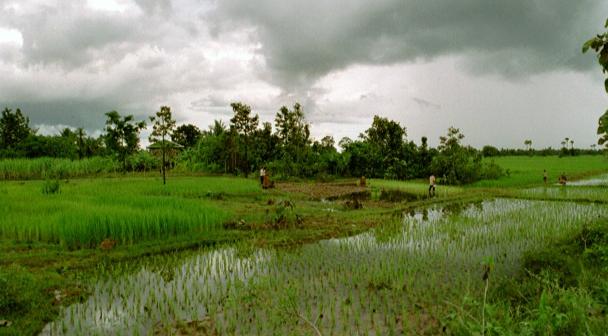
A rice field on route to Kampot
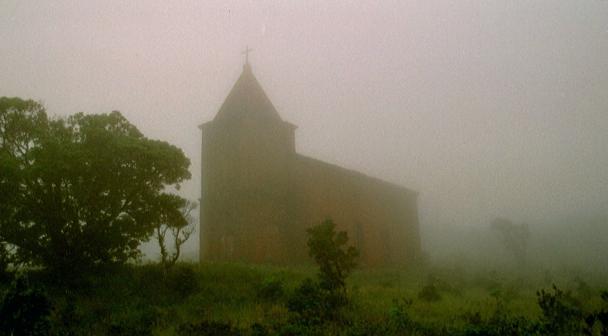
The church of "Bokor Hill Station" in the mist, giving it a spooky appearance
Sihanoukville is Cambodia's beach town. It has many hotels and restaurants but little tourists. From Sihanoukville you can visit "Ream National Park", a mangrove swamp and forests, which is home to dolphins, many bird species and isolated beaches.
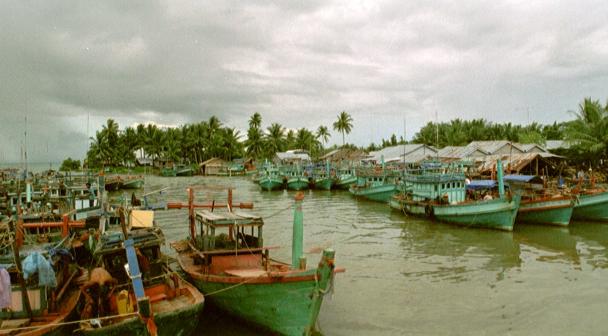
A small harbour between Kampot and Sihanoukville